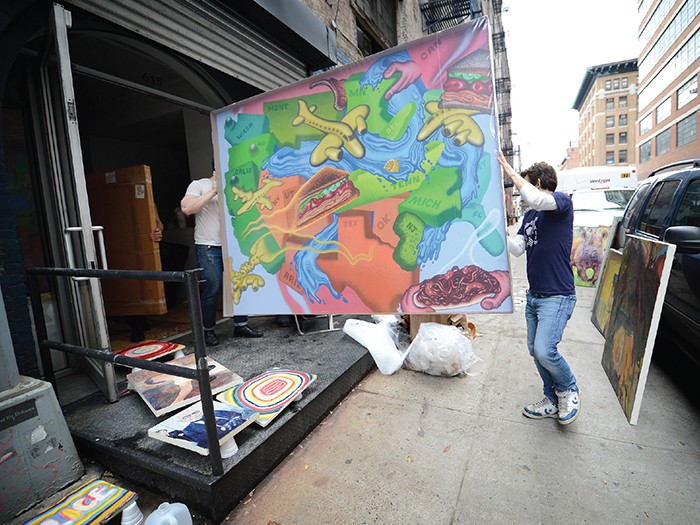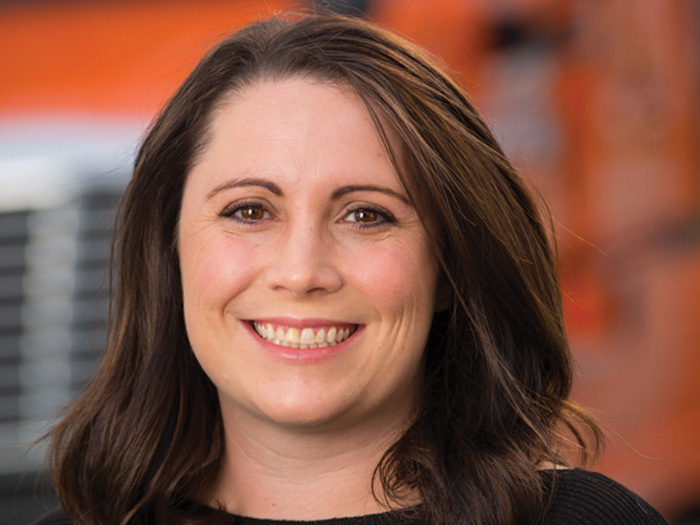Property Perils
Shielding Art From Wicked Weather

When art attorney Scott Hodes set out to transfer some artwork from his residence in Chicago to a newly purchased townhouse in Miami, he was surprised to learn that a number of art insurers in South Florida did not offer fine art insurance during the hurricane season.
Hodes, senior counsel at Bryan Cave LLP, also learned that the building of warehouses in the Miami area custom designed for high-end objects such as fine art was a booming business.
Such structures allow collectors to store their valuables in well-protected art warehouses during the hurricane season and then have the warehouse move the artwork back to their residences from December 1 through June 1 when hurricanes generally are not a threat.
“The art warehouse business has really taken off in Southern Florida and elsewhere around the world,” said Hodes.
London-based Robert Read, head of art and private clients at Hiscox, agreed.
“I think art warehouses are an essential part of the fine art business, whether it’s a pre-exhibition consolidation or a place for private collectors or dealers to store things. People are increasingly using art warehouses as a good way to mitigate risk.
“Also, if you have pre-agreed capacity with some of these shippers and packers at these storage locations, [then] in the event of a disaster, you always have a storage spot and you’ve also got people who are going to allocate their resources to help you,” Read added.
Typically, the way people insure their items in an art warehouse is on an all-risk of physical loss or damage basis, he said.
“It’s a very broad form where everything is covered apart from a few exclusions. Then, of course, what underwriters and insurers have been looking at is that there is a vast range in the quality of things that are stored at the art warehouses,” he added.
“I think art warehouses are an essential part of the fine art business … .” Robert Read, head of art and private clients, Hiscox
“Chubb has been a consistent, year-round player in the South Florida market,” said Melissa Lalka, Whitehouse Station, N.J.-based fine art manager of Chubb Personal Insurance for Chubb Group of Insurance Cos.
“We come up with guidelines and parameters of risk protection so we don’t have to be a player that is in and out of the market when it comes to hurricanes.”
Chubb interacts with the growing number of warehouses in the South Florida market by having a number of specialists, including ones in South Florida, to help its customers there inspect warehouses, said Lalka.
Lalka added that Chubb keeps a database of preferred vendors so if their clients are going to be moving items into a storage facility, Chubb can be very nimble in advising which facilities are well protected.
“One of the questions carriers want answered, before agreeing to insure collections located on the coast of Florida, is if there is a disaster plan in place.” — Sandra Berlin, vice president, Willis
Sandra Berlin, Chicago-based vice president at Willis, said: “As a broker who specializes in insuring fine art collections, it is important to be able to effectively place coverage throughout the United States, including second and third homes in windstorm-vulnerable areas such as Florida.
“One of the questions carriers want answered, before agreeing to insure collections located on the coast of Florida, is if there is a disaster plan in place,” Berlin added.
“Depending on a collector’s location in relation to the flood zone, it can be challenging to obtain all-risk insurance with low deductibles and competitive costs.”
New York-based Jennifer Schipf, senior underwriter, fine art and specie at XL Catlin, said her company offers a full range of art insurance in South Florida, where they have been operating for 14 years.
Do Your Research
“The important thing for clients is that they really do their research to find a warehouse that not only specializes in fine art — and there are several wonderful ones in the South Florida area — but to also do their research among friends and peers to make sure they’re getting good recommendations and good feedback from people who have used the same warehouse they are considering,” Schipf said.
It’s also important to know what type of warehouse facility you are considering, Schipf said. “If it’s a fine art warehouse, they should have climate control to protect their art as much as possible,” she said.
It’s very important for collectors to understand that most art warehouses make sure they are not liable for loss of property of more than the required 60 cents per pound of the property they are holding, which only scratches the value of art these days, Schipf said.
“So it’s absolutely critical that if clients expect to have insurance coverage when their artwork is in the warehouse that they secure the coverage themselves,” Schipf added.
Another trend in the art market that is contributing to the growth of art warehouses is an increasing number of people who “buy and hold” art as an investment or who may not have the property or desire to house the art themselves, noted Read.
That often occurs with individuals “who use the big free port warehouses located in Luxemburg or Geneva, and there’s a big one in Singapore and in Monaco where art is held in tax-free limbo and sold within those warehouses,” Read said.
Museums Need Storage
Museums have increasingly become a big player in the art and collectibles storage business, said Linda Sandell, Huntington T. Block’s chief underwriting officer.
“As I have traveled to various museums around the country to speak with registrars and others responsible for protecting collections, a common theme is the lack of storage space available to house their permanent collections,” Sandell said.
“Most collections continue to grow and expand through acquisitions and donations but in many cases there is only enough exhibition space to display a fraction of the objects in the collection. The rest must remain in museum storage areas that are reaching or are at capacity.
“Increasingly, museums must consider leasing outside storage space for a portion of their permanent collection,” Sandell added. “As many specialty art storage warehouses are at or near capacity, finding temporary space, especially for a large number of objects, can be challenging.”
South Florida is a showcase for model art warehouses.
“Increasingly, museums must consider leasing outside storage space for a portion of their permanent collection.” — Linda Sandell, chief underwriting officer, Huntington T. Block
Fortress, which was built as a state-of-the-art, steel-and-concrete facility 32 years ago, and is the only South Florida art warehouse that has weathered hurricanes Andrew, Wilma and Katrina, also has warehouses in Boston and New York.
“We store art, furniture and valuables like collectibles,” said Vice President Kimberly Jones. “Our facility has been vetted and approved by most of the major insurers, including Chubb, XL Catlin and AIG.”
Fortress, which is an eight-story full-service warehouse, has storage spaces of all sizes, from about 12-square-foot units to those that are in thousands of square feet, said Jones.
“We are willing to customize spaces,” she added.
Fortress recently completed an expanded and renovated private viewing gallery as “we realized art pieces were getting larger,” Jones said. The viewing gallery is open during business hours Monday through Friday.
“When collectors store things with us, they have the option to purchase insurance through our policy for an additional charge,” Jones said. “Or they can have their own fine art coverage, which most of them do.”
A similar facility, Robo Vault, has also opened in South Florida. The facility has an area for storing wine and seven enclosed garages with a robotic arm that can store and retrieve exotic and antique automobiles.
Museo Vault, which opened for business in late 2008, is another state-of-the-art fine art and collectibles warehouse. The idea for Museo arose after the busy 2005 hurricane season, highlighted by Hurricane Katrina.
Museo Vault was designed to withstand even the 200 mph winds generated by the most powerful hurricanes, said business manager Vanessa Amor. Art is stored at least 35 feet off the ground to protect it from even the most aggressive storm surge.
“The insurance companies got together and created requirements for storing fine art in a facility such as ours,” said Amor. Museo Vault can also provide insurance if the client wants to buy it through them.
Amor stressed that Museo Vault was not a self-storage facility. “You can’t just walk in here to access your valuables,” she said. “Everything is very controlled. You have to have an escort with you at all times.”
Museo Vault has a very robust 24/7 security system. “You name the sensor,” said Amor, “we have it.”












